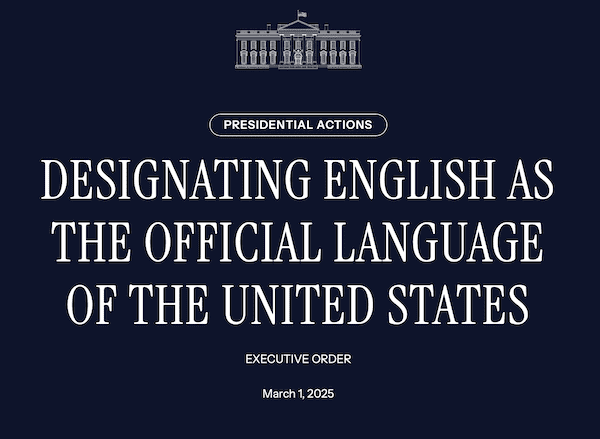This executive order, signed March 1, 2025, represents a significant and troubling shift in America’s approach to linguistic diversity. While framed as an administrative measure promoting unity and efficiency, my investigation reveals deeper ideological underpinnings that align with nationalist strategies documented in other regimes.
Deconstructing the Order’s Language
The order begins by invoking founding documents like the Declaration of Independence and Constitution to establish historical legitimacy. This rhetorical technique – appealing to tradition – masks what is essentially a radical departure from America’s historical acceptance of linguistic diversity.
The language about creating “a unified and cohesive society” and promoting “shared national values” uses benign-sounding terminology to advance a homogenizing agenda. The framing of English as “empowering” immigrants subtly shifts responsibility to newcomers rather than acknowledging structural barriers.
Most concerning is the explicit statement that the order designates “one — and only one — official language.” This exclusionary framing directly contradicts America’s multicultural reality where approximately 67 million residents speak languages other than English at home.
The Strategic Revocation of Executive Order 13166
The order revokes Executive Order 13166 (Improving Access to Services for Persons with Limited English Proficiency), which had required federal agencies to examine their services and develop systems to ensure that people with limited English proficiency could meaningfully access them.
Though the order includes language stating that agencies aren’t “required” to change services, the revocation of this protection creates an immediate policy vacuum. By directing the Attorney General to rescind guidance documents and provide updated guidance, the administration creates space for sweeping changes that could systematically reduce multilingual accessibility.
The Broader Pattern
This executive order cannot be viewed in isolation. It follows similar patterns identified in other nationalist regimes:
- Administrative Normalization: Framing ideological shifts as simple administrative efficiencies
- Symbolic Legitimization: Using founding documents and historical appeals to legitimize exclusionary policies
- Discretionary Implementation: Creating vague frameworks that allow for selective enforcement based on agency interpretations
- Legal Insulation: Including language that attempts to shield the order from legal challenges (Section 4c)
Potential Impacts
The immediate consequences of this order could include:
- Reduced resources for translation services in government agencies
- Barriers to civic participation for non-English speakers
- Cultural marginalization of linguistic minorities
- Weakened legal protections for language access rights
In the longer term, this represents a concerning shift toward a more nationalist definition of American identity – one that privileges a single linguistic tradition over the diverse heritage that has historically defined our nation.
Conclusion
While supporters may frame this as a simple administrative measure, this executive order represents a significant ideological pivot. By establishing a single official language and removing protections for linguistic minorities, the administration is advancing a nationalist agenda that threatens to undermine America’s pluralistic foundations.
This action merits close scrutiny as it unfolds, particularly regarding how agencies implement the order and how it affects communities whose primary language is not English.


